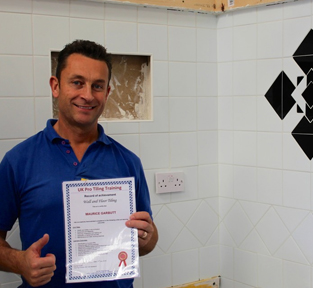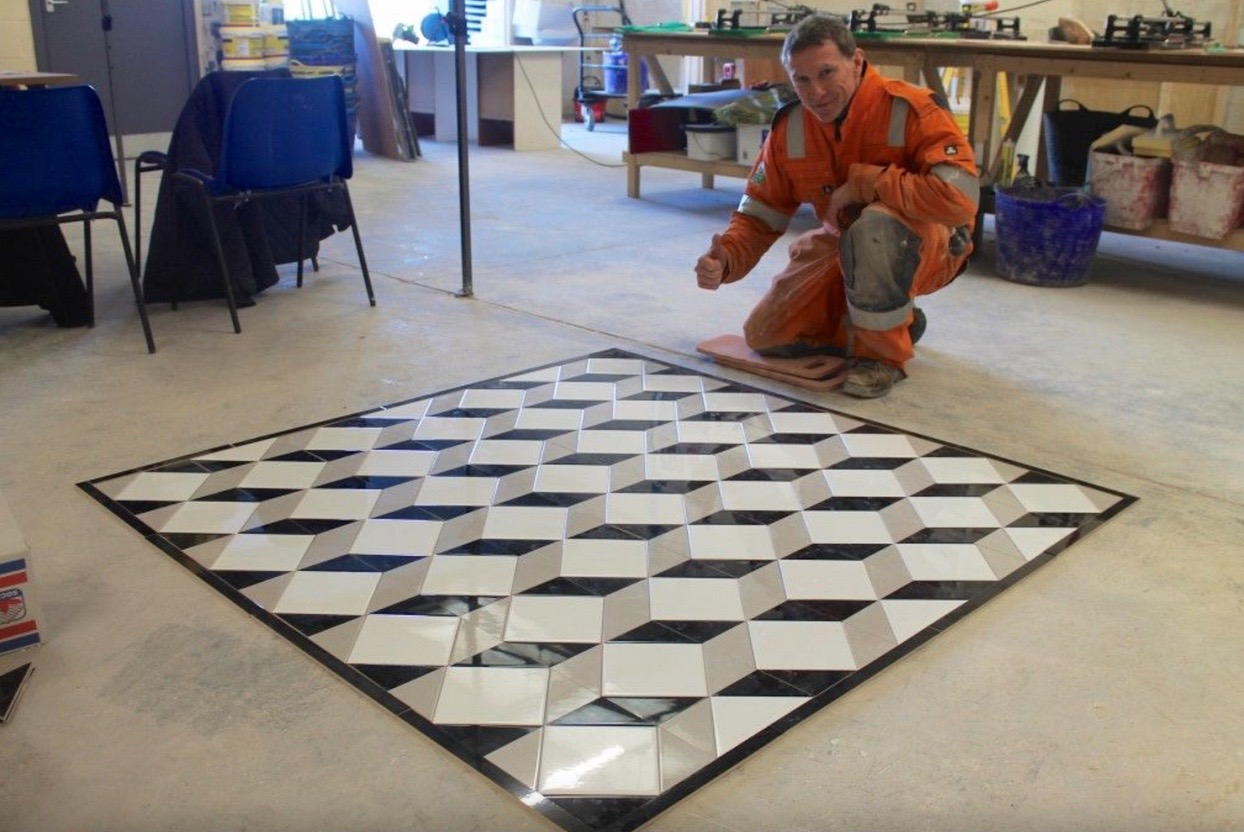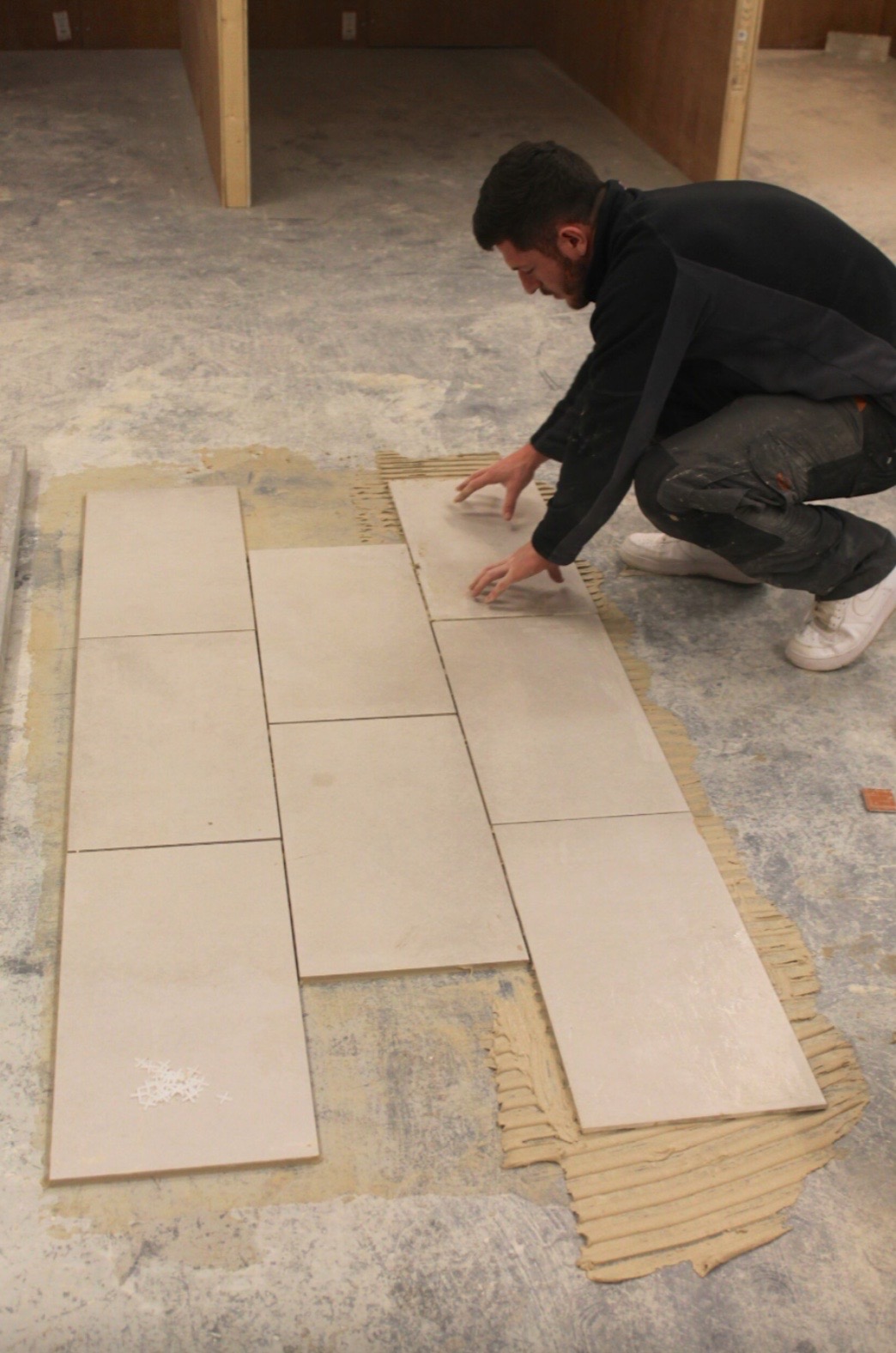What Is The Best – Tiles Vs Laminate Flooring?

We’re lucky that we have so many flooring options, but kitchens and bathrooms require special attention. A carpet isn’t going to work in either of these rooms because they’re high traffic areas susceptible to water damage.
The primary flooring types for bathrooms and kitchens are tiles and laminate. But which is better? We’re about to find out.
Floor Tiles: The Basics
In general, floor tiles fall into two categories; natural and man-made. Natural tiles are usually manufactured from stones such as slate, onyx and marble. They look stunning but do require some maintenance.
Manufactured tiles are undoubtedly the most popular because they have the durability that traditional stone tiles lack. You can choose between ceramic or porcelain floor tiles, and both come in a range of designs and colours.
Many manufacturers use tiles to recreate popular materials without durability issues. One example is wood, which isn’t ideal for a kitchen or bathroom because both are high-moisture areas, and wood can rot.
Tiles are so popular because of their versatility, which is why so many households choose them. But what about laminate flooring?
Laminate Flooring: The Basics
Laminate flooring is another popular material because it resembles natural wood but is much easier to maintain. Manufacturers layer materials together to create boards, and many households choose it because laminate is so cheap.
High-density fibreboard forms the bottom layer; then, a photo-realistic layer sits on top. The realistic layer usually resembles either dark or light wood, and most laminate boards have a top layer that protects the design from spills, dirt, pets and children.
Tile or Laminate: Which is Better?
To understand whether tile or laminate is better for your needs, it’s essential to review the pros and cons of each. Everything from cost to durability should play a part in your decision, so let’s dive in and settle this matter once and for all.
The Cost
The base cost of both laminate and tiles is similar and depends on the manufacturer and design you choose. Kitchen floor tiles can cost as little as £10 per square metre, and laminate flooring is the same.
Regardless of your budget, you’ll find a range of flooring options to suit your needs, so when it comes to the base costs, there’s not much difference between laminate and tiles.
We should mention, though, that natural stone tiles are always going to be more expensive. If you’re looking for a cost-effective option, it’s probably best to stick to ceramic and porcelain tiles.
When it comes to installing your flooring, tiles require a bit more effort – but they’re designed to last longer. The difference isn’t significant, and you’ll probably pay around £20 extra for tile installation.
Durability
Tiles are known for their durability, and as long as you install them right, they’ll withstand spills, stains and traffic – which is essential for kitchens and bathrooms. Laminate is relatively durable, but compared to tiles, it doesn’t come close.
While some manufacturers are creating weather and waterproof laminate flooring, it doesn’t offer the same level of durability as tiles.
As long as you use proper sealing techniques to ensure your tiles have the stability they require, you’ll enjoy them for years to come and won’t need to worry about replacing them.
Repairs
Laminate flooring is notoriously difficult to repair because each board locks with another to form a floor surface. While this sounds relatively simple, it can cause problems if you need to repair or replace a board.
You’ll have to take the system apart, which will prove to be an absolute nightmare if the damaged board is in the middle of the floor. You could also end up damaging other boards in the process, which means more expense in the long term.
Tiles are much easier to repair because each is surrounded by grouting, so you can easily remove one tile without disrupting the whole system.
Value
We all know by now that it’s the small elements that make the most significant difference – especially when it comes to selling your home. Potential buyers will pay attention to the windows, wallpaper and flooring, so it’s crucial to consider whether tiles or laminate will add more value to your property.
Many people still consider laminate to be of poor quality and a cheap alternative to natural wood. Tiles, however, add an element of luxury to your kitchen or bathroom, and people will be more likely to view your property in a positive light.
Maintenance
Both tile and laminate flooring require minimal maintenance, but you do need to keep them clean. Laminate is easy to clean, and you can run a mop over the surface without needing to do anything else.
Tiles have grouting, which secures them into place, and you should make an effort to clean them once a month. The everyday cleaning of your tiles is similar to laminate, and their sturdy design means you can hoover, mop and steam clean them.
While some people might find cleaning the grout to be a tedious task, there are electric brushes that speed up the process.
Diversity
It goes without saying that tiles are incredibly versatile, and you can find designs to suit your style preferences. From rustic tiles for a country kitchen to old school metro tiles, which bring some boho charm to a room, you can choose tile designs that work for your decor.
Laminate flooring usually resembles wood or stone, and you can choose dark or light wood effects. There’s not as much design choice as with tiles, but if you’re looking for something simple, then laminate will be fine.
The Bottom Line
If you’d like to enjoy the luxurious appeal of tiles but don’t want to pay the installation costs, then investing in floor tiling training could save you a lot of time and money. It’s also an excellent skill to learn if you want to change careers or take on some weekend work.
Tiles and laminate are similar in many ways, but if you’re looking for a cost-effective and durable solution, we’d recommend tiles. They look great, perform well and will withstand the test of time.



